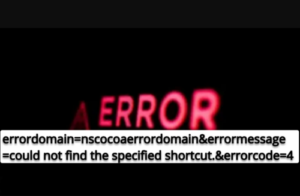Will Electric Scooters Revolutionize The Two-Wheeler Industry
The Indian Government has proposed a new plan of making all two-wheelers upto 150cc electric by the year 2025. This constitutes upto 90% of the total two-wheeler market in the country. The objective for pushing electrification is to reduce carbon dioxide emissions and lower the burden of fuel import, especially since India has 15 of the world’s most polluting cities. With the entry of many new players, the entire two-wheeler industry is most likely to be disrupted by the electric scooters.
The two-wheeler market is a huge segment of almost 5.6 million units worth Rs. 340 billion. There are a few factors that have stopped electric scooter manufacturers from entering into the lucrative segment. On one hand, rising fuel prices and high cost of ownership due to various regulations are making petrol two-wheelers very expensive. On the other hand, the various subsidies offered by the government and the falling prices of Lithium ion batteries are making electric scooters highly lucrative.
Electric scooters are going to see more traction in the urban markets. There are multiple factors that are driving this phenomenon. Urban areas have better availability of power, people are more open to a higher spending and the driving distances are lower. Even within the scooters, more powerful scooters are expected to have electric alternatives earlier, compared to the less powerful ones.
Two-wheeler sales in India have grown tremendously. However, in the last year before COVID, electric scooters showed a 130% growth compared to the previous year, underlining the potential that electric scooters have. The government is also taking a lot of steps to prompt customer purchases. To boost purchases, GST on electric scooters has been reduced from 12% to 5%. Moreover, there is also a tax exemption of Rs. 1.5 lakhs on the loan amount that customers may avail.
The industry is at a stage where it is yet to mature completely. There are a few challenges that still need to be overcome. To address this, even the government has made several announcements to promote electric scooter and vehicle manufacturing in the country. A major thrust is going to be on increasing manufacturing and making India a global hub. A Production-Linked Incentive (PLI) scheme of Rs. 18,000 crores has been announced for battery manufacturing. 2024 onwards, it is expected that the battery prices will go further down, at which point it will be at par with conventional two-wheelers.
Irrespective of those challenges, eventually, the transition to electric scooters and vehicles will have to happen. The burning issue of rising fuel prices has only gone to cement this belief. The growing focus on climate change and eco-friendly approach has prompted the electric scooter segment to disrupt the two-wheeler market. While there are a lot of new players like Ather Energy and Ola Electric who have begun manufacturing and sales of electric scooters, giants like Hero and Bajaj are also jumping on the electric scooter bandwagon. This gives customers a great choice between innovative and trusted brands.
If you have a long-term perspective, investing in the purchase of an electric scooter can prove to be a great move. If they are more expensive compared to the prevailing two-wheelers, you can always avail a two-wheeler loan to fund your purchase. Once you meet the eligibility criteria of your preferred lender, all you need to do is submit the required documents to apply for and avail a two-wheeler loan.
Do not forget to choose a lender who is reputed and trustworthy. Make sure that you get the best two-wheeler loan interest rates possible. You can understand the impact of loan repayment using an online two-wheeler loan EMI calculator.







